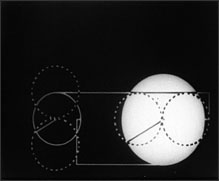
Image from the film X+X=0
by Robert Fairthorne and Brian Salt
(1936)
photo from Tate
Britain
 |
|
Image from the film X+X=0
by Robert Fairthorne and Brian Salt
(1936)
photo from Tate
Britain
|